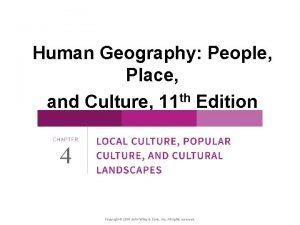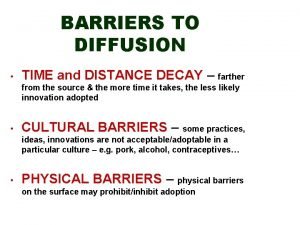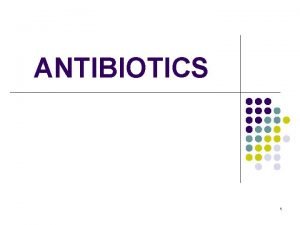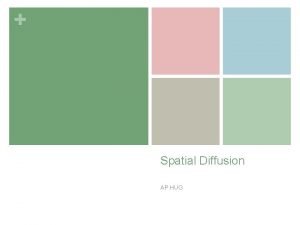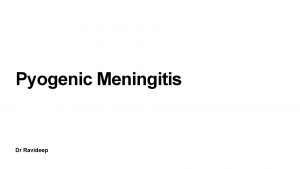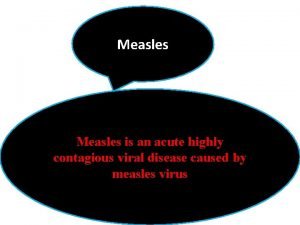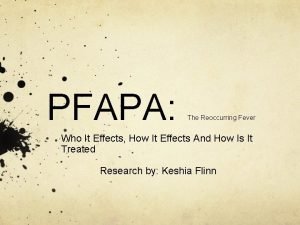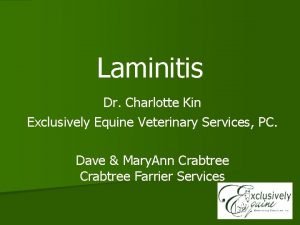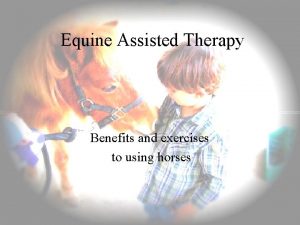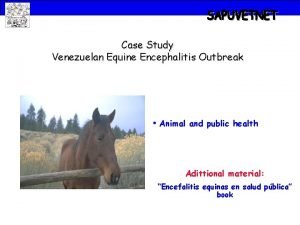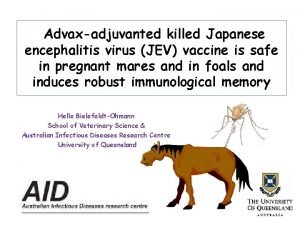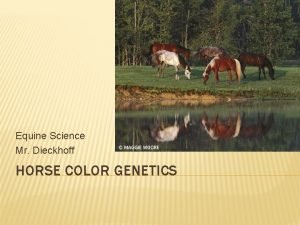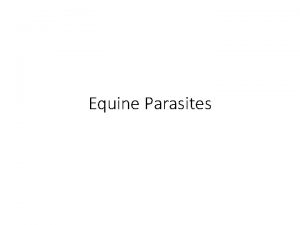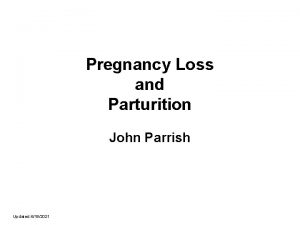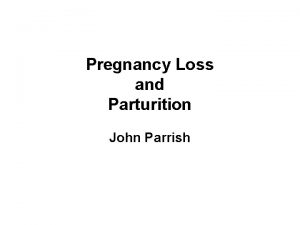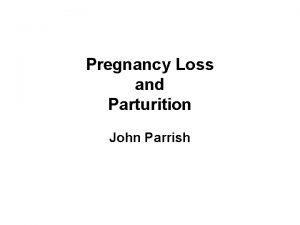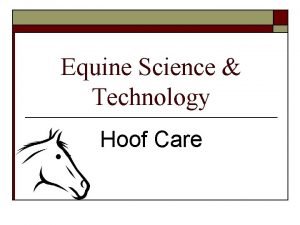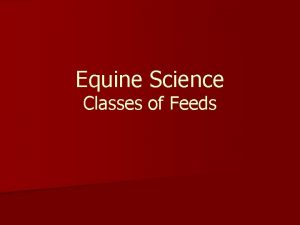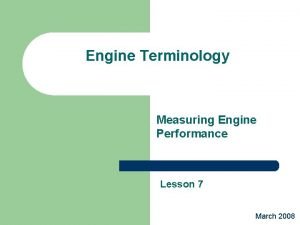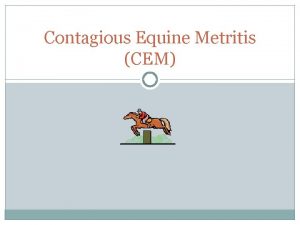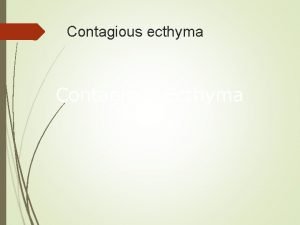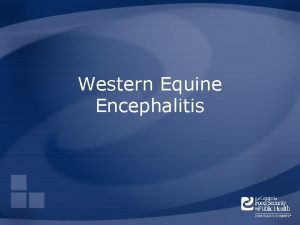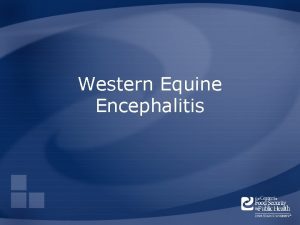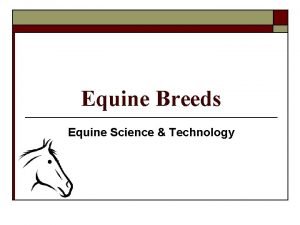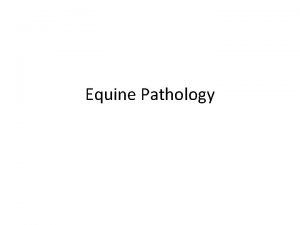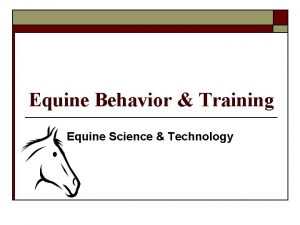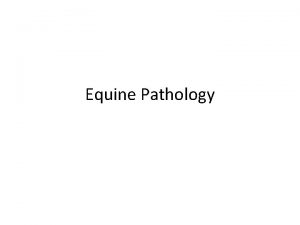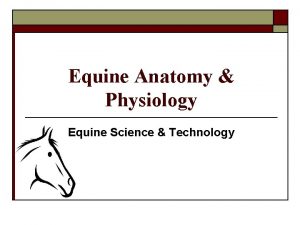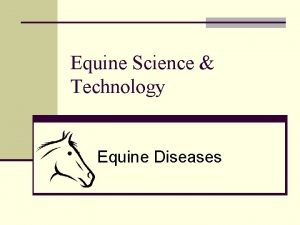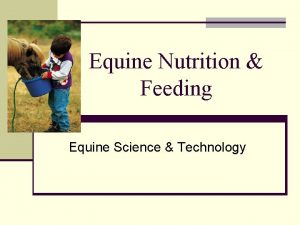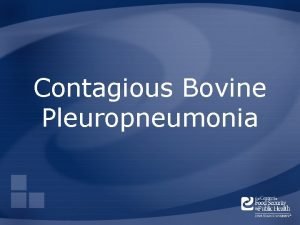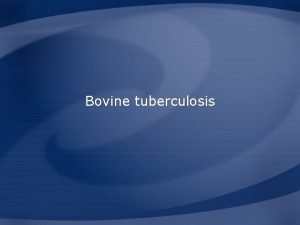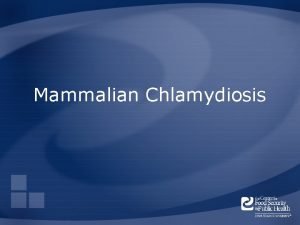Contagious Equine Metritis Overview Organism History Epidemiology Transmission


































- Slides: 34

Contagious Equine Metritis

Overview • Organism • History • Epidemiology • Transmission • Disease in Humans • Disease in Animals • Prevention and Control Center for Food Security and Public Health, Iowa State University, 2012

THE ORGANISM

The Organism • Taylorella equigenitalis – Microaerophilic – Gram negative coccobacillus • Two strains – Streptomycin sensitive – Streptomycin resistant Center for Food Security and Public Health, Iowa State University, 2012

The Organism • Taylorella asinigenitalis – Closely related to T. equigenitalis – Reported in: • Donkeys (U. S. ) • Stallion (Europe) – Does cause significant disease • Must be distinguished from T. equigenitalis given the severe impact of CEM on international trade Center for Food Security and Public Health, Iowa State University, 2012

HISTORY

History • First diagnosed in England, 1977 • First detected in U. S. – Kentucky, 1978 – Thoroughbred farm • Second U. S. outbreak – Missouri, 1979 • Third U. S. outbreak – Imported Lipizzaner stallions, 2006 Center for Food Security and Public Health, Iowa State University, 2012

History • Disease re-emergence in U. S. – December 2008 – Index case: stallion in Kentucky • Epidemiologic investigation – Five mares, 23 stallions tested positive – Additional 977 horses exposed – Multiple states affected – Suspected source • Stallion imported from Denmark in 2000 Center for Food Security and Public Health, Iowa State University, 2012

History • Continued sporadic cases in U. S. – California, 2010 – Arizona, 2011 • Cases unrelated to each other and to the 2008 -09 CEM outbreak • Exposed horses – Located, tested, treated Center for Food Security and Public Health, Iowa State University, 2012

EPIDEMIOLOGY

Epidemiology • Reported mainly in Europe – Difficult to grow in culture – Geographic distribution difficult to estimate accurately • Many countries have strict import regulations – Imported animals or semen may cause outbreaks in CEM-free regions Center for Food Security and Public Health, Iowa State University, 2012

Number of horses imported to Kentucky from CEMaffected countries, 1987 -2010 Range: (imported horses/year) 69 to 474 Center for Food Security and Public Health, Iowa State University, 2012

TRANSMISSION

Transmission • Venereal transmission – Mainly during mating – Also spread by infected semen during artificial insemination or through fomites • Transmission rate high • Stallions are most common source – Bacteria persist months to years in reproductive tract Center for Food Security and Public Health, Iowa State University, 2012

Transmission • Asymptomatic carriage – Mares may carry on clitoris and in uterus – Foals born to infected mares can carry the bacteria on their external genitalia – Become long-term asymptomatic carriers Center for Food Security and Public Health, Iowa State University, 2012

DISEASE IN HUMANS There is no evidence that Taylorella equigenitalis infects humans.

DISEASE IN ANIMALS

Species Affected • Horses are only natural host – Thoroughbreds very susceptible • Experimental infection – Donkeys – Rodents • Incubation period – 2 to 14 days Center for Food Security and Public Health, Iowa State University, 2012

Disease in Animals • Infected stallions – No clinical signs • Infected mares – Metritis – Temporary infertility – Some infections subclinical – Mucopurulent vaginal discharge 1 to 2 weeks after breeding Center for Food Security and Public Health, Iowa State University, 2012

Disease in Animals • Endometritis, cervicitis, vaginitis – Discharge resolves in days to weeks – Most infected mares do not conceive – Mares that give birth may transmit to foals • Abortion Center for Food Security and Public Health, Iowa State University, 2012

Post Mortem Lesions • Uterus – Severe lesions possible – Endometrial folds • Swollen, edematous, exudates present • Cervix • Salpingitis, vaginitis • Lesions most apparent 14 days postinfection then gradually decrease Center for Food Security and Public Health, Iowa State University, 2012

Morbidity and Mortality • No fatal infections known • Morbidity very high – Nearly every mare mated to an infected stallion will become infected – Most mares recover • Some become asymptomatic carriers – Mares can be re-infected • Clinical signs most severe during first infection Center for Food Security and Public Health, Iowa State University, 2012

Diagnosis in Horses • Clinical – CME should be considered in mares that develop abundant mucopurulent vaginal discharge 14 days after breeding • Differentials – Pseudomonas aeruginosa – Streptococcus zooepidemicus – Klebsiella pneumoniae Center for Food Security and Public Health, Iowa State University, 2012

Diagnosis in Horses • Culture – Genital tract swabs • May breed carrier stallions to test mares and culture mares for T. equigenitalis – Organism is fastidious • PCR – Infected and carrier mares and stallions • Serology Center for Food Security and Public Health, Iowa State University, 2012

Sampling • Before collecting or sending any samples, the proper authorities should be contacted • Samples should only be sent under secure conditions and to authorized laboratories to prevent the spread of the disease Center for Food Security and Public Health, Iowa State University, 2012

Samples to Collect • Mares – Vaginal discharge – Clitoral fossa, cervix, endometrium • Stallions – Urethral fossa and sinus, distal urethra, external surface of penis and prepuce • Foals – Placenta and genital tract of normal foals born to infected mares Center for Food Security and Public Health, Iowa State University, 2012

PREVENTION AND CONTROL

Recommended Actions • IMMEDIATELY notify authorities • Federal – Area Veterinarian in Charge (AVIC) www. aphis. usda. gov/animal_health/area_offices/ • State – State veterinarian www. usaha. org/stateanimalhelathofficials. aspx • Quarantine Center for Food Security and Public Health, Iowa State University, 2012

Prevention and Control • CEM screening before importation • Endemic areas – Breed only CEM-free stallions and mares – High risk stallions • Bred for first time – High risk mares • Visited infected facility • Come from areas that are not CEM-free • Mated with stallion from non-CEM-free area Center for Food Security and Public Health, Iowa State University, 2012

Prevention and Control • Good hygiene, decontamination, and sanitation during breeding are important • Cleaning and disinfection – T. equigenitalis susceptible to most common disinfectants • Chlorhexidine, ionic and non-ionic detergents, sodium hypochlorite • No vaccine available Center for Food Security and Public Health, Iowa State University, 2012

Prevention and Control • Treatment of carriers – Wash external genitalia with disinfectant – Local antibiotic treatment – Systemic antibiotics recommended in some animals • T. equigenitalis may be more readily eliminated in stallions Center for Food Security and Public Health, Iowa State University, 2012

Prevention and Control • Eradication – Surveillance – Testing • All stallions at beginning of breeding season • Mares tested according to risk of infection – Quarantine of infected animals – Treatment – Moratorium on breeding from infected animals Center for Food Security and Public Health, Iowa State University, 2012

Additional Resources • Center for Food Security and Public Health – www. cfsph. iastate. edu • USAHA Foreign Animal Diseases (“The Gray Book”) – www. aphis. usda. gov/emergency_response/do wnloads/nahems/fad. pdf Center for Food Security and Public Health, Iowa State University, 2012

Acknowledgments Development of this presentation was made possible through grants provided to the Center for Food Security and Public Health at Iowa State University, College of Veterinary Medicine from the Centers for Disease Control and Prevention, the U. S. Department of Agriculture, the Iowa Homeland Security and Emergency Management Division, and the Multi-State Partnership for Security in Agriculture. Authors: Ariel Pleva, MPH; Kerry Leedom Larson, DVM, MPH, Ph. D, DACVPM Anna Rovid Spickler, DVM, Ph. D Reviewers: Glenda Dvorak, DVM, MPH, DACVPM Center for Food Security and Public Health, Iowa State University, 2012
 Metritis adalah
Metritis adalah Food chains food webs and energy pyramid worksheet
Food chains food webs and energy pyramid worksheet Croup contagious
Croup contagious Contagious diffusion
Contagious diffusion Stimulus diffusion definition
Stimulus diffusion definition Attitudes are contagious is yours worth catching
Attitudes are contagious is yours worth catching Expansion diffusion definition
Expansion diffusion definition Animatism examples
Animatism examples Contagious diffusion diagram
Contagious diffusion diagram What is contagious diffusion
What is contagious diffusion Are voodoo dolls contagious magic
Are voodoo dolls contagious magic Contagious diffusion
Contagious diffusion Is protracted bacterial bronchitis contagious
Is protracted bacterial bronchitis contagious Difusi contagious
Difusi contagious Define expansion diffusion
Define expansion diffusion Cranial nerve palsy
Cranial nerve palsy An acute highly contagious viral disease
An acute highly contagious viral disease Is pfapa contagious
Is pfapa contagious Becoming a contagious christian video study download
Becoming a contagious christian video study download Charlotte kin test
Charlotte kin test Lingfield vets
Lingfield vets Equine definition
Equine definition Uspc stall card
Uspc stall card Equine encephalitis
Equine encephalitis Equine encephalitis
Equine encephalitis Pasture pals equine rescue
Pasture pals equine rescue Equine viral rhinopneumonitis
Equine viral rhinopneumonitis Horse color calculator
Horse color calculator Equine
Equine Equine
Equine Equine
Equine Equine
Equine Equine science
Equine science Equine science
Equine science Indicated horsepower formula
Indicated horsepower formula



